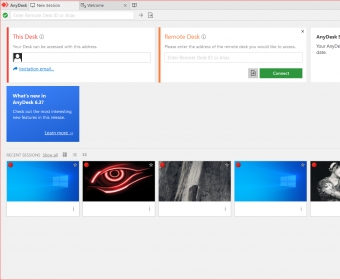
For example could be interesting for vMotion interfaces that are just private and needed only across ESXi.Īnother reason to don’t disable is a bug in ESXi 6.5 (that seems has not been fixed yet with Update 1): the ESXi host 6.5 may fail with a PSOD when IPV6 is disabled! More information on KB 2150794 (ESXi 6.5 host fails with PSOD when IPV6 is disabled). Same apply if you are using host profiles, if you change the IPv6 setting a host reboot is performed.īut does it make sense change this setting, considering also that you need to perform an host reboot? Actually could be better and simple just keep it enable and maybe start plan to use it, because it can provide some benefit, like the auto configuration of the address, without a need of an external DHCP. Note that you always need to reboot the host to apply this changes. Or also using CLI with one of this commands:Įsxcli network ip set -ipv6-enabled=falseĮsxcli system module parameters set -m tcpip4 -p ipv6=0 ” We do not recommend that you disable IPv6 or its components, or some Windows components may not function.” ( )īut what about VMware and ESXi itself? There isn’t a clear position, but it’s interesting notice that in ESXi 6.5 is no more possible disable IPv6 from the host client web UI. On Linux and Windows systems is become very difficult disable it and Microsoft itself does not recommend disabling IPV6: Several people are disabling IPv6 support in ESXi for different reasons: because of the minimum privilege principle (if you are not using a service, why you have to keep it enabled?) or simple because they don’t want any IPv6 address in the network. The default E1000 device that is presented to guests is not supported.This post is also available in: Italian Reading Time: 2 minutes This is great for configuring Jumbo frames, ensure that you use VMNET3 interfaces to take full advantage.

When creating vSwitch’s and port groups via the shell, they may not appear in the console until you restart the hostd service.

Specify the following: IPv4 Address - Specify an ESXi IPv4 address.

Esxcfg-nics cmd allows you to set the speed, duplex or list physical nics.Įsxcfg-nics -h shows the list of cmd availableĮsxcfg-vswitch cmd allows you to administer vSwitchs.Įsxcfg-vswitch -l # list current vswitch configurationĮsxcfg-vmknic -l # list vmkernel interfaces and their configurationĮsxcfg-nics -l # display listing of physical adapters and their link stateĮsxcli network ip interface list – ESXI’s ifconfig showing all host network information.Ĭreate a port group: esxcfg-vswitch -A TestPortGroup1 TestSwitch1 Specify this option if you do not use a DHCP server to set the ESXi IP address.


 0 kommentar(er)
0 kommentar(er)
